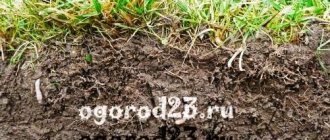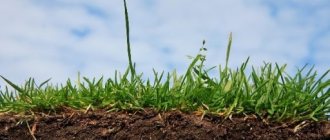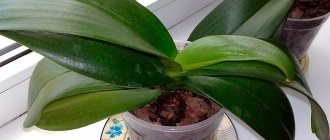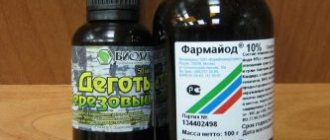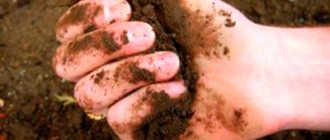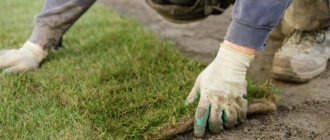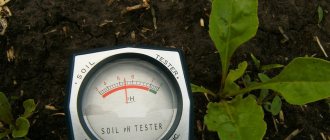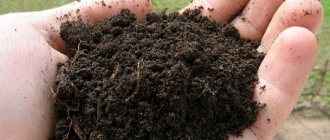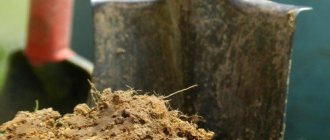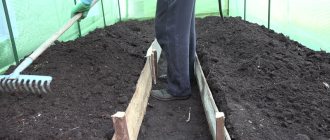Everyone knows that plants need to be fertilized, but the knowledge that the soil needs to be disinfected before planting usually comes with experience. But it is the quality and composition of the soil that directly affects flowering and harvest. Over the course of a year, ideal conditions for the life of bacteria and microorganisms are formed in it, and not all of them are beneficial. We'll tell you what and how to solve the problem!
Why disinfect the soil?
If disinfection is neglected, pathogens, fungi, mold, nematodes and other parasites actively multiply in the soil. The seedlings take root with difficulty, and the future harvest will be meager and poor. In disinfected soil, weeds grow less and pests breed less easily, so you can reduce the number of treatments in the future. Seedlings absorb nutrients better, grow faster and healthier.
Answers to frequently asked questions
Is it necessary to disinfect purchased substrate?
Preferably. In general, the manufacturer guarantees that the soil has been completely disinfected at the factory. But sometimes it’s better to be safe than sorry.
What is the most effective way to disinfect soil?
Some types of fungi are able to survive in the cold. But the probability of infection of purchased land with such disputes is very low.
If you decide to disinfect a purchased substrate, you can use any method.
It is better to calcinate garden soil in the oven and water it with antifungal compounds.
Do I need to use several methods or will just one be enough?
In general, one cultivation of the land for seedlings will be enough.
The best time for disinfection
You need to monitor the condition of the soil all year long, but it will only be possible to truly process it comprehensively in the spring, when the soil is already warming up, but there is still a minimum of planting in it. This way you can safely apply special antiseptics and not worry that they will destroy the seedlings. Just wait until the snow finally melts.
How to process and with what after different crops
Various vegetable and berry crops leave behind pathogenic microflora. Therefore, the soil is treated before new planting.
- After tomatoes, peppers and eggplants - copper sulfate, Trichodermin, Fitosporin.
- After potatoes – Fitosporin.
- After cucumbers, pumpkins and zucchini - Fitosporin, boric acid.
ON A NOTE.
You can also plant green manure; they not only suppress the development of pathogenic microflora, but also have a beneficial effect on the soil.
Folk remedies
These methods are simple, effective and environmentally friendly, making them ideal for starting seeds in most cases. Temperature treatment implies that you need to act on the soil directly, but directly on the site this is problematic. But planting green manure is suitable for preparing beds.
Freezing
Wrap the soil in a bag made of natural breathable fabric and take it outside in the cold (from -10 degrees) or put it in the freezer for 5 days. After this, put it in a warm place for a week so that all pests and larvae become active, and repeat the procedure at least twice.
Calcination
Sprinkle the soil onto a baking sheet in a layer up to 1.5 cm thick and distribute evenly. Moisten it a little with a spray bottle and put it in the oven for half an hour, preheated to 80-90 degrees. Do not increase the temperature because the soil will become unsuitable for seedlings.
Steaming
Place natural breathable fabric in a colander, pour soil on top and place in a boiling pan in a water bath. The soil should be steamed for about an hour and a half, but this is still a more gentle option than the oven. Stir it every quarter of an hour to ensure even processing.
Green manure plants
Some plants have a beneficial effect on the structure and composition of the soil. The so-called green manures are planted in early spring, before the main crops. Your seeds germinate in containers, while legumes, mustard, oats, rye and radishes prepare the soil. Before planting green manure seedlings, you need to completely cut off and dig up the top layer right with the roots.
Chemicals
There are many special products that destroy weeds, infections and pathogens as quickly and efficiently as possible. But the more effective the drug, the more toxic it is, so you need to use them strictly before planting.
Copper sulfate
One of the most effective preparations in gardening and gardening is copper sulfate. It is needed to combat fungus, mold, for general antiseptic treatment and as a supplement for copper deficiency. Dissolve a spoonful of powder in a bucket of water and water the soil when the snow melts.
Bordeaux mixture
The most popular garden remedy for all ills also contains slaked lime. This is a very effective fungicide and a surefire way to kill any bacteria. Bordeaux mixture is also suitable for treating already planted plants.
Potassium permangantsovka
Potassium permanganate is a universal antiseptic that is equally suitable for treating seeds and disinfecting soil. Prepare a weak pink solution of about 3-5 g per bucket of water. This recipe is better suited for alkaline and neutral soils, because acidic ones can oxidize even more.
Bleaching powder
This is the most radical remedy if the soil is already in very poor condition. Protective clothing, gloves, a respirator, goggles and other protective equipment are required. About 200 g of powder should be thoroughly dug up with soil and left to rest.
Fungicides and insecticides
Bacterial-type preparations consist of microorganisms that destroy pathogens and strengthen the immunity of seedlings. Choose complex action products and combine them with insecticides to kill pests in the soil. The optimal time is three weeks before planting.
Soil selection
A responsible event, which is based on successful gardening.
Ready-made soil can be bought in stores. It is worth taking into account the opinion of those who have been engaged in various plantings for many years: both indoor plants and agricultural crops.
The supply market is rich and varied. Unfortunately, not all primers are conscientious about the quality of their products.
The substrate from the store can not only be “empty” in terms of nutrition for plants, but also have various diseases.
When collecting soil from the garden for seedlings at home, keep in mind that diseases and infections of crops that previously grew in this land can be transmitted to new crops.
Improper agricultural practices can cause fungal diseases. The earth can be a carrier of diseases of other crops, even from which you have already gotten rid of.
Garden soil needs to be treated and nourished before planting seeds and at all stages of the plant growing season.
Substrates taken from forests, meadows, and parks are varied in composition. In addition to the nutritional resource, they have their own microflora, the presence of living organisms and microbes.
Do not take land near highways and industries. In addition to the bouquet of unfavorable pathogenic flora, you will receive heavy metals and other chemicals in the substrate.
Important! Any soil needs to be disinfected and prepared if you want to save yourself from unnecessary problems and troubles when growing and breeding plants.
Disinfection of soil in a greenhouse
Although the greenhouse is partially isolated from the outside world, the soil in it needs to be treated in the same way. After all, a warm, humid greenhouse is better suited for pathogens than the street with its temperature fluctuations. We recommend cultivating the soil in the greenhouse twice a year, and periodically changing it completely as it becomes depleted.
Treatment with biological products
You can’t steam an entire garden in a saucepan. It is necessary to disinfect the soil both in the greenhouse and in the open ground. In this situation, biofungicides can be used.
Disinfection with biological products, in addition to fighting fungal diseases and bacteria, creates a favorable microflora for plants and has an immunostimulating effect.
Among these biological assistants are:
- Fitosporin;
- Gamair;
- Alirin;
- Baktofit;
- Planriz;
- EKOMIC Harvest;
- Trichodermin.
Biological products do not harm humans, animals, or insects. They increase seed germination and increase plant resistance to disease. They create favorable microflora for the growth and development of crops.
These soil disinfection preparations are effective against fungal and bacterial diseases: scab, late blight, blackleg, root rot, powdery mildew, leaf rust and other diseases.
Fitosporin is very popular among knowledgeable gardeners. This is a justifiable choice. Planting material is treated with phytosporin before planting. The liquid solution is used to process compost and treat plants during the growing season. Fitosporin-M is used for watering indoor flowers.
Disinfection of soil for seedlings
Weak young shoots are very sensitive to all external factors, so any bacteria and weeds in the soil affect germination. In this case, home methods - calcination, steaming or freezing - are sufficient. Or use ready-made store-bought mixtures that have already been processed.
Calcination
A controversial method of soil preparation in the spring before planting. Of course, warming the soil at a temperature of 70-90°C will neutralize some of the pathogenic microflora, but this also kills beneficial bacteria and disrupts the nutritional balance of the soil.
Calcination can be done if you took the soil from the garden when there is a possibility of disease accumulation.
After such treatment, the land becomes practically lifeless. It needs to be restored and a favorable environment for the crops to be created.
Microbiological fertilizer Baikal EM-1 is designed to improve soil fertility. Beneficial microorganisms are suitable for both indoor flowers and seedlings.
